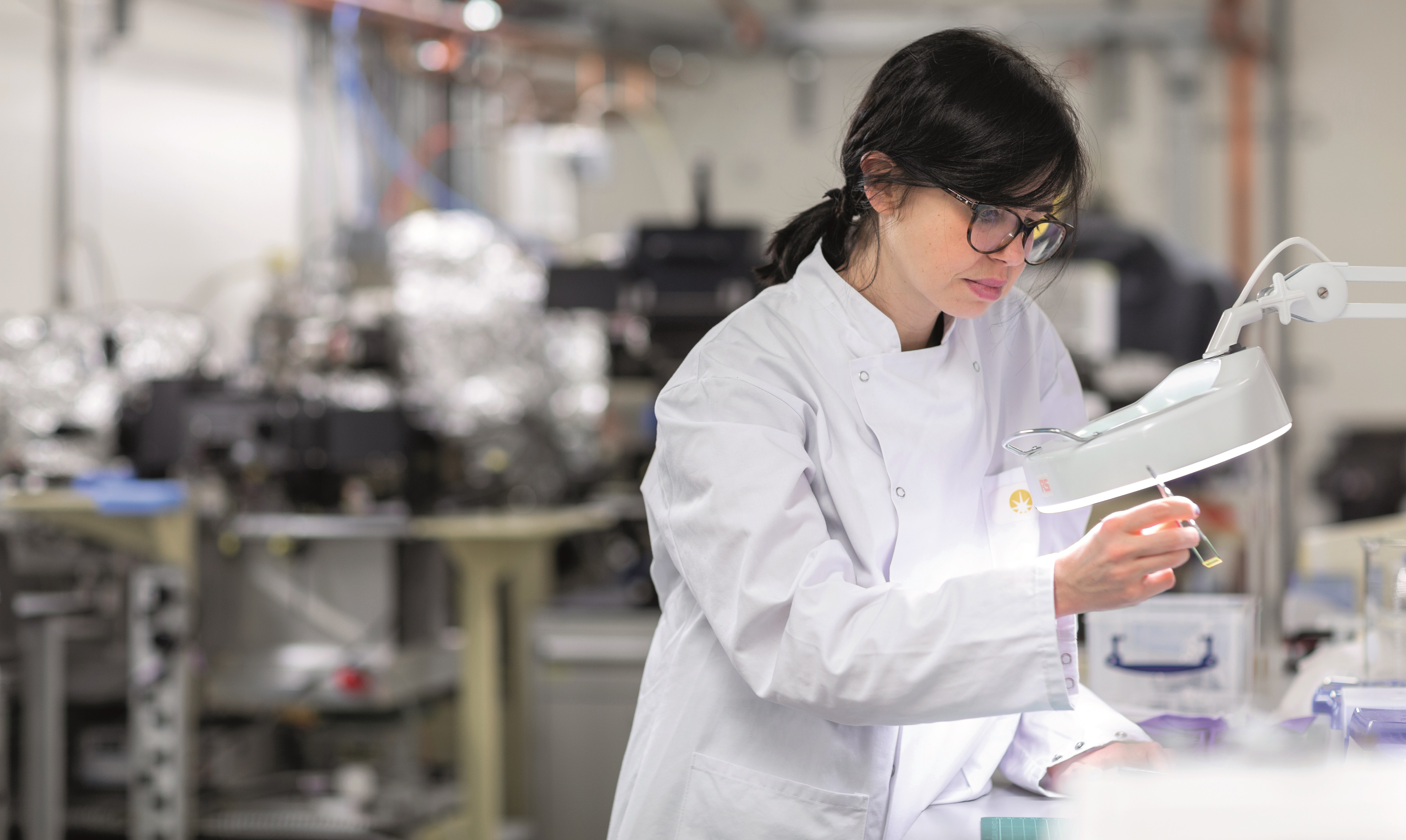Death Stranding's Chiral Network is nonsense, but there's science behind it
Chiral—pronounced Kai-ral after the Greek letter Chi—is not a word Hideo Kojima made up while developing Death Stranding. Sam Bridges' Chiral Network is complete nonsense, obviously, but chirality is a common property of molecules and even light that occurs naturally and, with a bit of help from us, is helping create the electronics of the future.
Consider the mantis shrimp, if you dare. These predatory crustaceans come in two types: the smashers with a pair of legs adapted as clubs, and the spearers who have evolved barbed tips to their appendages. What they both have in common are incredible eyes, with up to 16 types of photoreceptor cell (humans bumble around in relative darkness with only three) some of which can detect circularly polarised light, which they might possibly use to signal to one another. This circular polarisation means that while the light waves continue to move in a straight line, their electromagnetic fields rotate perpendicularly (at a right angle) to this direction. Photographers will know this from the circular polarising filters that can be screwed onto a camera lens to increase colour saturation and contrast in a scene at the cost of a little brightness.
Think of chirality, therefore, as handedness, or the direction of a helix. It may twist to the left, or to the right. Think of your hands, or look at them if you have them nearby. Put them palm to palm and their shapes match, but put one on top of the other and they're clearly different. Chiral structures are everywhere—in the shells of snails, in the shapes of pasta, in the screws holding your desk together. In the world of molecules, chirality is important: a collection of atoms that twists one way may unblock your stuffy nose, but become methamphetamine if it spirals the other. Please don't write in to tell us that crystal meth also unblocks your nose.

"There's lots of different things that I think are fascinating about chiral materials," says Dr Jessica Wade, a research associate at Imperial College London's chemistry department who studies circular polarisation. "We use them in LED displays, to make the screens of computers and mobile phones. What we're trying to do there is to increase the efficiency of the display and improve battery life, because at the moment if you have an OLED there's an anti-glare filter in front of the pixels, and what this is made of is basically a circularly polarising filter, which is very efficient at cutting glare. But when you've got pixels that are emitting unpolarised light, which is 50 percent left-handed and 50 percent right-handed, you lose half of it in that filter. So we're spending a huge amount of battery power trying to push as many photons as possible through this filter, which could go on other things. If you could make the light intrinsically circularly polarised, then you could really increase the efficiency of the screen and massively improve battery life."
Spiralling out
Power efficiency is a huge deal in computing at the moment, especially as the power-hungry 5G connectivity continues to roll out across the country. Screens are big consumers of energy while on, but on a phone they spend a lot of their time off. On a laptop PC, however, it's likely to be on all the time you're using it, and that can really eat into battery life. Human eyes can't differentiate between left- or right-handed light—we bow to the mantis shrimp here—but it can be detected in other ways, leading to possibilities for future encryption technologies based on polarised light. "If you want to encrypt something, and you make the sequence of light chiral, then you can only really detect it if you know that's what you're looking for," says Wade.
"Almost everything in the human body is chiral," she continues. "Sugars are chiral, DNA is chiral, amino acids are chiral. It's fascinating how often it manifests, but it's hard to explain because we don't see it. Tech is beginning to realise how cool it would be if we could use chiral structures to generate circularly polarised light or even manipulating the quantum properties of electrons."
Almost everything in the human body is chiral.
"Almost everything in the human body is chiral," she continues. "Sugars are chiral, DNA is chiral, amino acids are chiral. It's fascinating how often it manifests, but it's hard to explain because we don't see it. Tech is beginning to realise how cool it would be if we could use chiral structures to generate circularly polarised light or even manipulating the quantum properties of electrons."
We're way beyond high-school physics classes here. Electrons exist as pairs, with different quantum states referred to as 'spin'. It's been shown that, as electrons move through a chiral material, you can filter by spin depending on the handedness of the material.

How does this help? Well, there's a whole branch of electronics known as spintronics, and it affects something close to our hearts: hard drives. The first storage device to use a 'spin valve' to alter the magnetic state of materials at the molecular level with data storage in mind came in 1997, with the massive 16.8GB IBM Deskstar Titan. These days, every spinning hard drive uses the technique to some degree, hugely shrinking the magnetic impulses that can be detected as the read head moves over the surface and therefore increasing the density of data that can be written.
"Chiral materials have all these fascinating properties at room temperature," says Wade. "The way you used to do spintronics was to make things incredibly cold, liquid helium cold, but chiral materials allow you to do this on a small scale without expensive to produce inorganic materials." Wade is a chemist, so uses 'inorganic' to mean materials that aren't carbon-based. She works with carbon in the graphene family, but graphene itself is flat so cannot be chiral, although it is possible to roll it up into chiral nanotubes.
We talk a lot in this column about using new materials to enhance familiar processes, and we're there yet again. Kojima may have hit on a novel idea in Death Stranding, but the science behind it is sound, and it is likely to affect all of our lives in the future, even if it doesn't lead to an internet connection that runs at the speed of light.
from PCGamer latest https://ift.tt/2Mv50Pj
via Gamers Online





Post a Comment